
Features: #Travel #Taiwan #Nantou #Summer
With temperatures already hitting nearly 30°C in Taiwan, and no sign of a nice cold-front to drop the rising humidity and heat, it’s time to explore ways to cool down.
As mentioned in our previous post ‘18 best places to travel for summer in Taiwan‘, there are many places local Taiwanese go to to deal with the Taiwan summer heat. Aside from specific drinks to treat heat stroke and other sun-inflicted illnesses, one of the best ways to escape the heat is to travel up into the mountains. More specifically, travel to Nantou.
Where is Nantou (南投 nántóu)?
Before we get into the recommendations for a Nantou summer trip, let’s make sure you know where the region is.
The county of Nantou is situated in the center of Taiwan, and is surrounded by Taichung, Changhua, Yunlin, Chiayi, Kaohsiung, and Hualien county. According to the Nantou County Government, the population of Nantou as of May 2022 was 481,670, making it the second most populated county in Taiwan.
Nantou is made up of one city (Nantou City), four towns (Puli, Caotun, Zhushan, Jiji), and eight townships (Guosing, Lugu, Mingjian, Shuili, Yuchi, Zhongliao, Ren’ai, Xinyi). The city of Nantou is the most populated area in the county, with nearly 98,000 people. On the flip side, the least populated township is Jiji with just over 10,000 people (May 2022).
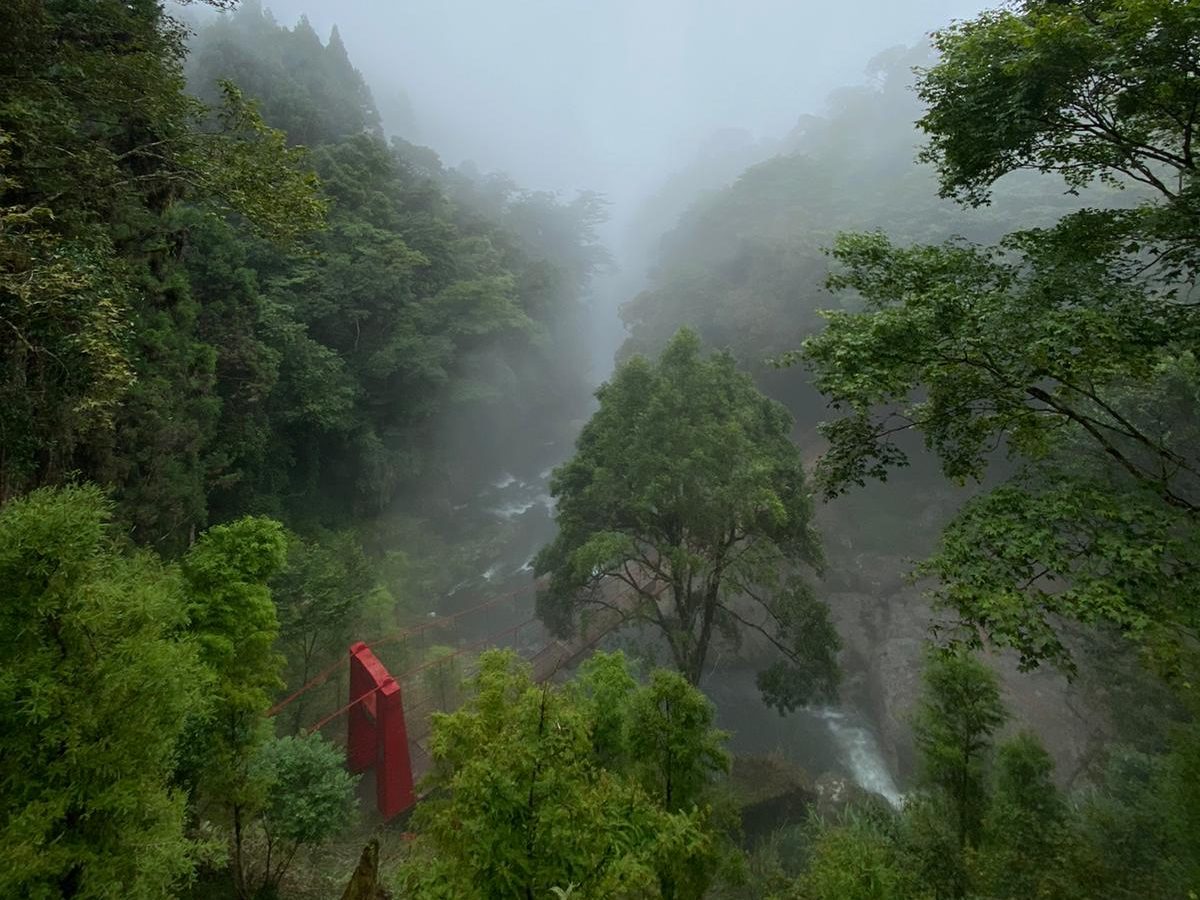
Where should I travel in Nantou?
In this post, we have chosen to highlight areas other than Nantou City (aside from one special place!) and Sun Moon Lake. This isn’t to say that we think you shouldn’t go there. This exclusion is more because we want you to gain a better idea of all that Nantou has to offer.
As such, we have selected a few spots we think are worthy of your attention from the following areas: Jiji (Chi-chi), Ren’ai, Zhushan, and Xinyi. Feel free to click and skip ahead if you already have a location in mind. If not, let’s begin!
JIJI 集集

Jiji (Chi-chi) is located in the west of Nantou, and is the smallest region in both area (49.72km squared) and population (with just over 10,000 people).
Aside from its amazing natural beauty, Jiji is also well known for a more somber reason. At 1:47am on September 21st 1999, Jiji was the epicenter for a 7.3 magnitude earthquake, the second largest and devastating earthquake recorded in Taiwan. It took the lives of over 2,400 people and created $300 billion (NTD) worth of damage. As a result, this historic earthquake is more commonly referred to as the 921 earthquake, owing to the day the disaster took place.
While there are constant reminders of how the 921 earthquake affected the town, Jiji does offer numerous attractions that suggest growth and prosperity from the disaster. Below are a few examples.
For those interested in finding out more about the earthquake, we recommend visiting the 921 Earthquake Museum of Taiwan and Chelungpu Fault Preservation Park.
Taishun Gallery Bridge (武昌宮浙江) 泰順廊橋
Taishun Gallery Bridge is a replica of a bridge of the same name in Zhejiang, China. While beautiful, it’s really the statue at the center of the bridge that you should aim for. Superstition says that those wanting a romantic relationship should wish at the statue of the God of the Moon.
At the same time, should you already be in a relationship, superstition dictates that you should not do this. However, superstition or not, it’s worth visiting the bridge just to see the awesome wooden structure.
We also recommend taking a look at the surrounding temple (武昌宮). Damaged by the 921 earthquake, it has not been reconstructed and so is a sombre reminder of the earthquake’s power.
Open hours: 7am to 8pm
Transport: Car/scooter (with free parking!)
Price: Free!

Jiji Railway Station 集集車站
Originally built in 1930, Jiji Railway Station was one of the few wooden Japanese-style railway stations left standing in Taiwan. Though the original structure was unfortunately destroyed by the 921 earthquake, the current replica does still clearly express the station’s original style.
While Nantou tourism website names it as a sure interest for railway fans due to the locomotive on display, we think there is something for everyone here. Visit the train station to dip into Taiwan’s history and culture under Japanese occupation!
Open hours: 8am to 5pm everyday
Transport: Car/scooter or by train (TRA)
Price: Free!
~ NOTE ~ Jiji Railway Station is still a functioning station, with a working railway line running from Ershui to Checheng, passing through Yuanquan, Zhuoshui, Longquan, Jiji, and Shuili. Please be advised that it may get busy during rush hour.

REN’AI 仁愛
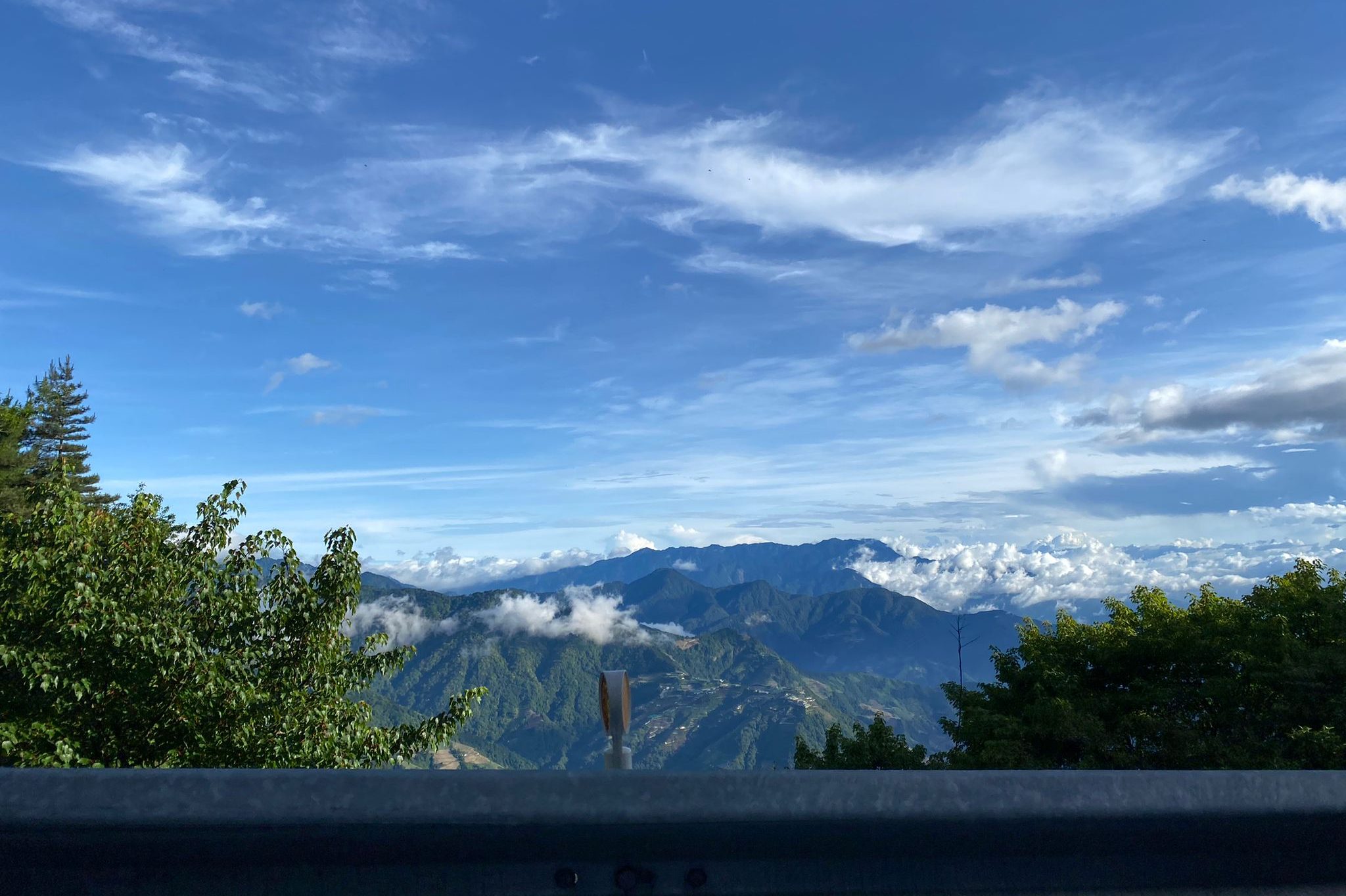
Located in the north east of Nantou county, Ren’ai township is mostly home to the indigenous Seediq, Atayal, and Bunun tribes. The region boasts some seriously impressive views, not just of rolling hills, but also of starry night skies and stunning waterfalls. Here you’ll find a short list of some key places we recommend visiting if you find yourself in the area.
Qingjing Farm 清境農場
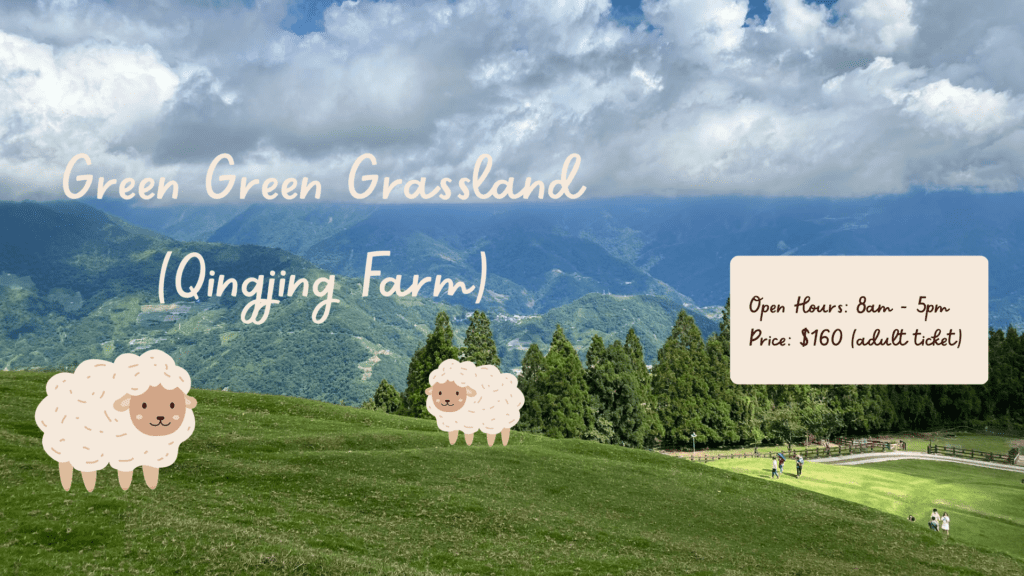
As one of the most famous attractions in Ren’ai, Qingjing Farm is a travel destination that should not be missed! Also known as Cingjing Farm, the farm is predominantly made up of the Green Green Grasslands, Guanshan Pastoral Area, and the Small Swiss Garden. It also features 10 walking trails, one of which is renowned for its gorgeous views of the nearby mountain ranges.
Aside from exploring the natural beauty of the farm and mingling with the sheep, we also highly recommend attending the farm’s shows. Both the sheep shearing show and the equestrian riding and acrobatic show are fantastic and worthy of your attention.
Check out this article for more information about why this should be your next trip!


Tiebilun Gorge and Waterfall 帖比倫峽谷與瀑布
Lower those temperatures by heading 1,300 meters above sea level and visit the secret of the Hongxiang tribe! Said to be the birthplace of the Atayal tribe, the gorgeous serenity of the place with its glistening blue waters is sure to evoke a relaxed response from the visitor. Bask in the glory of Tiebilun Gorge and Waterfall, and explore Taiwan’s hidden natural beauty!
Accessing Tiebilun Gorge and Waterfall?
The area is accessible by foot. Though the walk is said to be a moderately challenging hike, it is fairly pleasant and requires little, if any, hiking experience. There is a parking lot for cars and scooters, and from there it takes about 15 minutes to reach the waterfall.
Open hours: 24/7
Transport: By foot
Price: Free!
Warning!
Though swimming is not restricted, please be aware that heavy rainfall may cause strong currents in the pool. Please also take caution when there has been or will be rainfall, as this may cause the path to become slippery and potentially dangerous.
Hehuan Mountain Dark Sky Park 合歡山暗公園
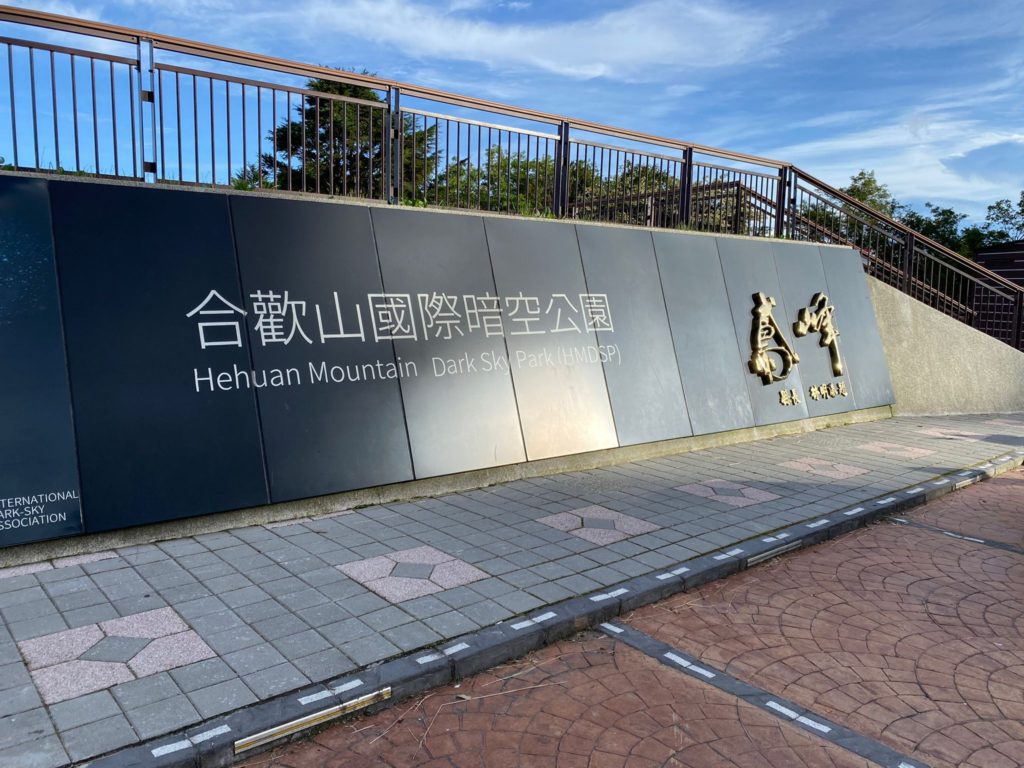
Perfect for stargazing, this scenic spot provides spectacular views of the stars, free from light pollution. As such, it is currently the first and only park in Taiwan to have been certified by the International Dark-sky Association (IDA).
What is the International Dark-sky Assocation (IDA)?
Now, you may be thinking – that’s cool, but what is the IDA? It’s an organization that aims to raise awareness about light pollution. There’s even an annual photography contest called ‘Capture the Dark’, where you can capture and send in your own photo from Hehuan Mountain Dark Sky Park! There are no entry requirements, and any age can enter.
For more information about the contest, please click here. For more information about the IDA and the important work that they do, please visit their main website.
Open hours: 24/7
Transport: Car/scooter
Price: Free!
~ NOTE ~ Clear skies are weather dependent, so please check the weather forecast before visiting the lookout. It is slightly out of the way.
ZHUSHAN 竹山

Translating to bamboo mountain, Zhushan is located in the southwest of Nantou. It is home to a plethora of indigenous plants and wildlife, including bamboo, banyan trees, deer, and wild boar. Zhushan is also home to the Pingpu tribe and is viewed as the original hunting area for the Atayal, Bunun, Shao, and Zou tribes.
Tianti Scenic Area (and Sky Ladder) 天梯風景區(梯子橋)
Tianti Scenic Area encompasses many beautiful and intriguing features, such as the Sky Ladder, Taiji Canyon (太極峽谷), Yufu Suspension Bridge (玉福吊橋), Qinglong Waterfall (青龍瀑布), Centennial Earth God’s Temple (百年土地公廟), and the 921 Earthquake Clock (九二一地震石鍾).
Though perhaps the more well-known structure in the area, the Sky Ladder is one of the many attractions we recommend exploring in the area. Extending 136 meters wide and 20 meters deep, the Sky Ladder Bridge was once one of few suspension bridges in the world to feature ladders. Acting as a connector to the beautiful Taiji Canyon, the bridge offers the visitor a brief pause before the steep trek up to the canyon begins. With this in mind, we recommend assessing your physical fitness before committing to the canyon climb.
For the explorer, photographer, historian, and anyone in between, Tianti Scenic Area provides incredible views for those willing to push themselves a little. With that said, persevering up the mountain will give visitors access to Qinglong Waterfall and the Centennial Earth God’s Temple. A fulfilling reward, to say the least.
Tianti Scenic Area also gives visitors access to Yufu Suspension Bridge. Built in 2003, this bridge acts as a replacement to the original Hangtou Iron Bridge (航頭鐵橋), which was destroyed on the site by the 921 earthquake.
Another clear reminder and indication as to the power of the 921 earthquake is the 921 Earthquake Clock. The 6 meters long and 4 meters wide rockface that was once part of a cliff fell as a result of the earthquake, creating cracks on the surface that appear to resemble an hour hand, minute hand, and second hand. It may be a reach, it is said that the cracks indicate 1:47, the exact timing the 921 earthquake struck Taiwan.
When is Tianti Scenic Area open?
Tianti Scenic Area is open everyday except Tuesdays.
In the summer (March to September), the area is open from 7:30am-5pm. In the winter (October to February), the area is open from 8:30am-5pm.
Please be advised that tickets will stop selling at 3:30pm.

Is entrance to Tianti Scenic Area free?
Unfortunately, no, Tianti Scenic Area is not free. There are 2 pricing brackets, each of which have been explained below. Each ticket purchase comes with one voucher that can be used within the attraction.

Tickets are also available Klook for just $50!
Is the carpark for Tianti Scenic Area free?
No, the carpark for Tianti Scenic Area is not free.
Parking prices are $100 for cars and $50 for scooters. Coaches are not allowed.
- Open hours: 7:30am-5pm
- Transport: Car/Scooter
- Price: $200
Chelungpu Fault Preservation Park 車籠埔斷層保存園區
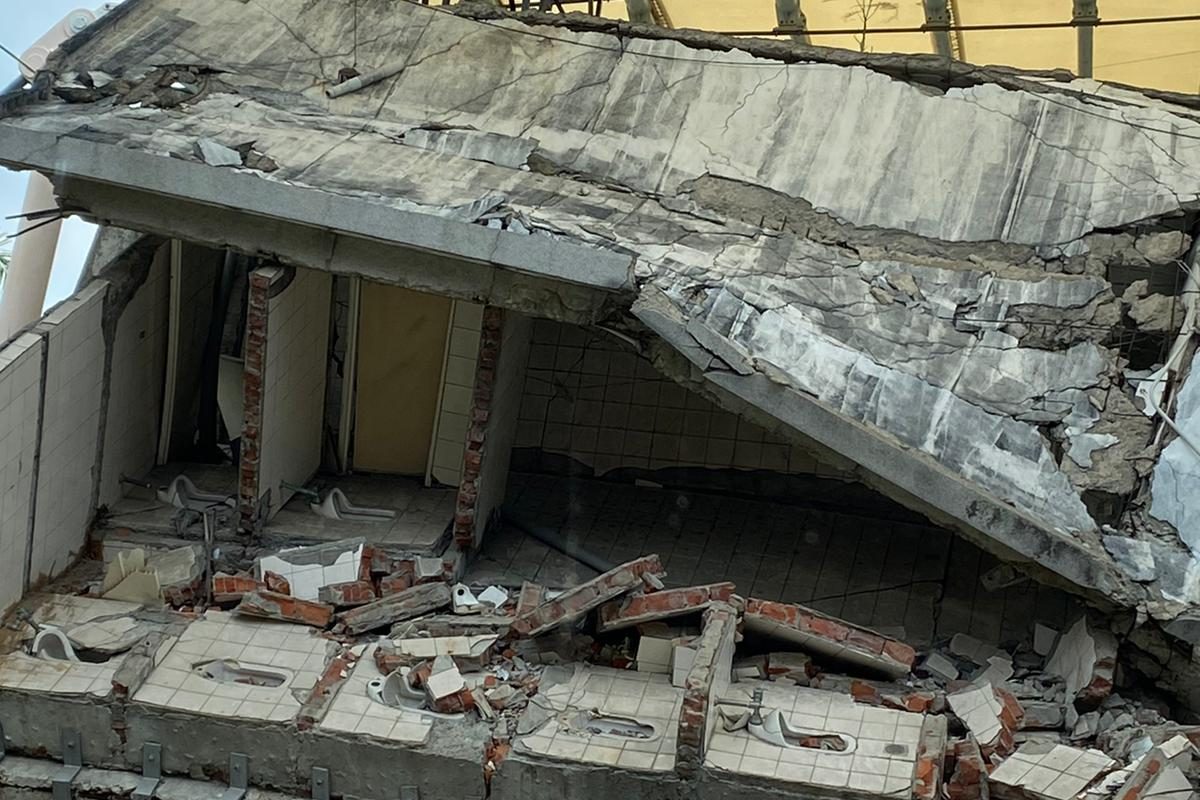
Chelungpu Fault Preservation Park is an interactive science and geology museum that aims to preserve, inform, and educate visitors about the 921 earthquake that struck Taiwan. It is operated by the National Museum of Natural Science, and was opened to the public in 2013 after an NTU professor discoverd the Chelungpu Fault in 2002.
The park includes several exhibitions and galleries, including the fault preservation hall where you can see the thrust faults that caused the earthquake. There is also a geology hall and an electricity hall, both informing visitors about how geology, electricity, and energy all interact together. The theme of energy continues outside of the galleries with little interactive activities like energy-generating rocking chairs, available to visitors to relax in the shade, or to build up a sweat!
Chelungpu Fault Preservation Park is an essential visit for anyone wanting to understand more about the mechanics behind the 921 earthquake. It is both family-friendly and couples-friendly, and we strongly recommend a visit.
For those wanting to learn more about the 921 earthquake and the impact it had on people, rather than geography and geology, we suggest visiting the 921 Earthquake Museum of Taiwan.
Note: Though the majority of the informative paragraphs are in Chinese, Chelungpu Fault Preservation Park does have English translations available.
Is Chelungpu Fault Preservation Park free?
Unfortunately, no, Chelungpu Fault Preservation Park is not free. There are 3 price brackets, each of which are detailed below.
| Ticket Price | Criteria |
| $50 | Regular Adults |
| $30 | Groups of 20 or more; Museum pass members; Students (with valid student ID) |
| $25 | Seniors aged 65 years or above (with proof of ID) (Weekends and Holidays) |
| Free | Vistors arriving before 10am on Wednesdays; Children under 6 years of age; Seniors aged 65 years or above (Weekdays); Persons with disabilities with one accompanying person |
Open hours: 9am to 5pm (closed on Mondays and Chinese New Year)
Transport: Free parking
Price: $50

Xiaping Suspension Bridge 下平吊橋
Come to Xiaping Suspension Bridge to see the lotus flowers in full bloom! Planted by Zhushan county to encourage tourism to the area, this is the first time that the flowers have blossomed. As a result, the Jiewei River that flows beneath the bridge (affectionately known as the ‘Back Garden of Zhushan’ (竹山後花園)), has since been transformed into a crowd of whites, reds, and pinks. Be sure to experience this magical sight before it is too late!
Open hours: 24/7
Transport: By foot or by car/scooter. The path is uncovered, so we would not recommend walking it during the day in the summer.
Price: Free!

Xitou Forgotten Forest 忘憂森林

A hotspot for bloggers, influencers, and hikers alike, Xitou Forgotten Forest is truly a magical place. Renowned for its outstanding beauty in all four seasons, the forest is most popular during the summer season. Found at an altitude of about 2000 meters, the high frequency of rain in the summer months often causes the forest to be cloaked in mist. The rain also drops the temperature significantly, making it the perfect summer destination to cool down.
Read our article ‘Travel to Xitou Forgotten Forest‘ now, and find out why this is the ultimate cool down destination.
XINYI 信義
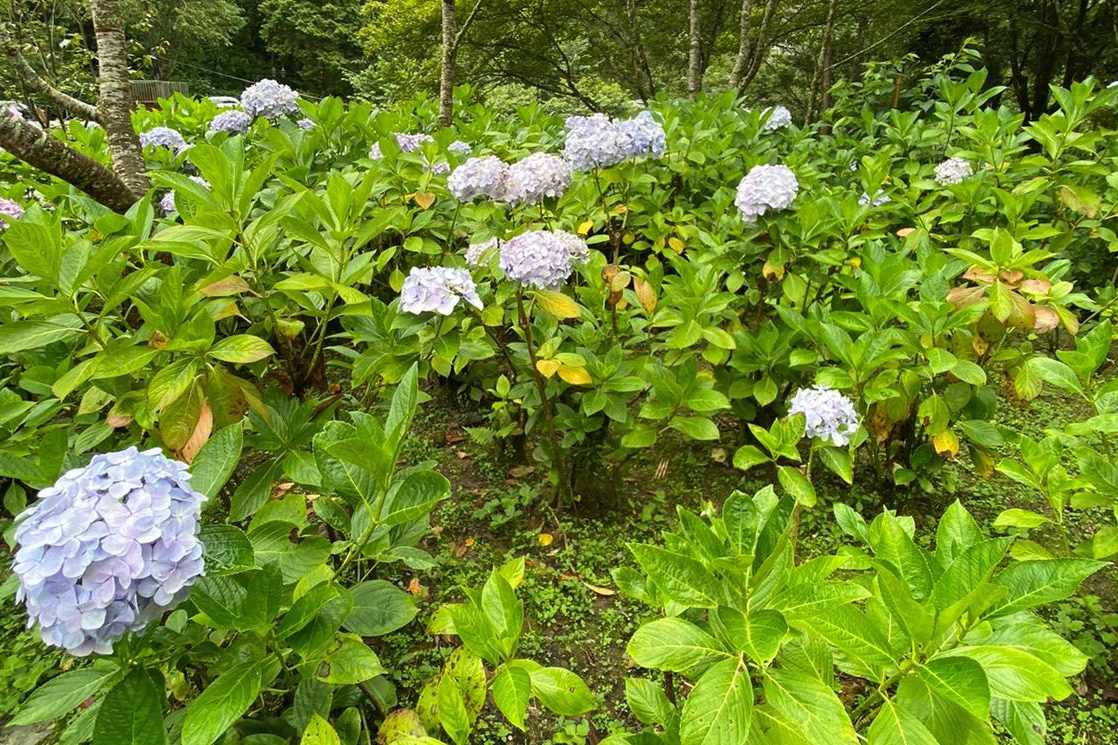
Shuanglong Rainbow Suspension Bridge 雙龍七彩吊橋
A truly spectacular feat of engineering is the Shuanglong Rainbow Suspension Bridge. Called ‘rainbow’ for its colorful exterior, the bridge extends 324 meters wide, and reaches 110 meters downwards at the deepest point. It is no wonder that this is Taiwan’s longest and deepest suspension bridge!
What’s more, there’s not just one, but two bridges! Also known as the double suspension bridge, the attraction was opened in 2020 and has been extremely popular with tourists ever since. The bridge also leads to a waterfall that is a beautiful feature in its own right, and is open 24/7. Visit Shuanglong Rainbow Suspension Bridge today!
When is Shuanglong Rainbow Suspension Bridge open?
Shuanglong Rainbow Suspension Bridge is open everyday except Wednesday. In the summer (March to September), the attraction is open from 8am-5pm. In the winter (October to February), the attraction is open from 8am-4:30pm.

Is the Shuanglong Rainbow Suspension Bridge free?
Unfortunately, no, the Shuanglong Rainbow Suspension Bridge is not free. There are 3 pricing brackets, each of which have been explained below.
| Ticket Price | Criteria |
| $100 | Normal tourist |
| $70 | Children between the ages of 6-12 years; Groups of 30 or more; Residents of Xinyi Township (with proof of ID); Military or police (with proof of ID) |
| $30 | Seniors aged 65 years or above (with proof of ID) |
| Free | Children under 6 years of age |
Opening hours: 8am to 5pm
Transport: Car/scooter
Price: $100
NANTOU CITY 南投市

There is one place, and one place only in Nantou City that we are going to mention in this post and that is…
Sunny Hills 微熱山丘
Famous for its pineapple cake, there is no more renowned brand in Taiwan, or globally, than Sunny Hills. Created using only the sweetest pineapples from growers in Bagua, Nantou City, these cakes are to die for. Head to the place where it all started and try them for yourself!
Alternatively, if traveling just for cake is not quite your speed, feel free to explore their website. It’s also available in English but has limited information and is not as aesthetically pleasing to the eye.
The Sunny Hills store is open everyday from 10am to 6pm. We have provided the address here, just in case Google Maps (or whichever service you use) offers the wrong store.
Address: 540台灣南投縣南投市八卦路1100巷2號
Open hours: 10am-6pm
Transport: Car/scooter
Price: Up to you!
Travel to Nantou: Accommodation in Nantou
When it comes to accommodation in Nantou, pickings are pretty slim if you don’t know where to look. At first glance, the style of rooms seemed to be fairly limited to glamping and wooden style lodges similarly furnished to your grandmother’s house.
Then we checked Agoda. And everything changed. We seriously recommend using this site to help navigate your accommodation options for Nantou. With Agoda, you can find more high-end hotels at affordable prices, often with nights bundled together so you can experience luxury twice!
Not only does this platform offer rooms that make the trip-away extra special, but also includes a wider range of options than competitors like Booking.com. Click on one of the ads on this post to start your holiday today!

ABOUT OUR EXCLUSION OF SUN MOON LAKE…
While Nantou is undoubtedly famous for Sun Moon Lake, we have not included that destination in this post for two key reasons.
- 1) It’s been overdone. Yes, Sun Moon Lake is gorgeous, and no doubt would make for a perfectly instagrammable summer experience. However, the purpose of this post is to uncover ‘hidden gems’, and while Sun Moon Lake is certainly a gem it’s extremely well-known.
- 2) Sun Moon Lake gets hot (like hot hot!). The excursions in this post have been chosen specifically with the idea of relaxing cool weather in mind. Sun Moon Lake, while certainly relaxing, can be touch-and-go on the ‘cool weather’ part.
That being said, if you’re really itching to head out to Sun Moon Lake, just make sure you book a comfortable hotel. You’ll be thankful for the air-con, fresh sheets, and cooling bath after a long day out in the sun. We recommend using Agoda to find daily discounts for trusted, rated, and reviewed B&Bs or high-end hotels. Whichever suits your fancy, Agoda has it all.
Conclusion
While this post barely touches the surface of all that Nantou has to offer, it’s a decent starting point in planning your trip. Of course, we will keep adding and making new posts related to exploring Nantou, so bookmark this page and stay updated! Feel free to send us a message or leave a comment below, and share your experiences with Nantou.

You may also be interested in 18 best places to travel for summer in Taiwan.
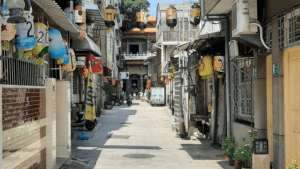

Comments
Pingback: The 921 Earthquake Museum of Taiwan: One of the Most Important Museums in Taiwan - CovertProfession
Pingback: Explore Xitou Monster Village - CovertProfession
Pingback: 18 Best Places to Travel for Summer in Taiwan - CovertProfession
Wow, I can’t wait to go travelling in Taiwan! <3